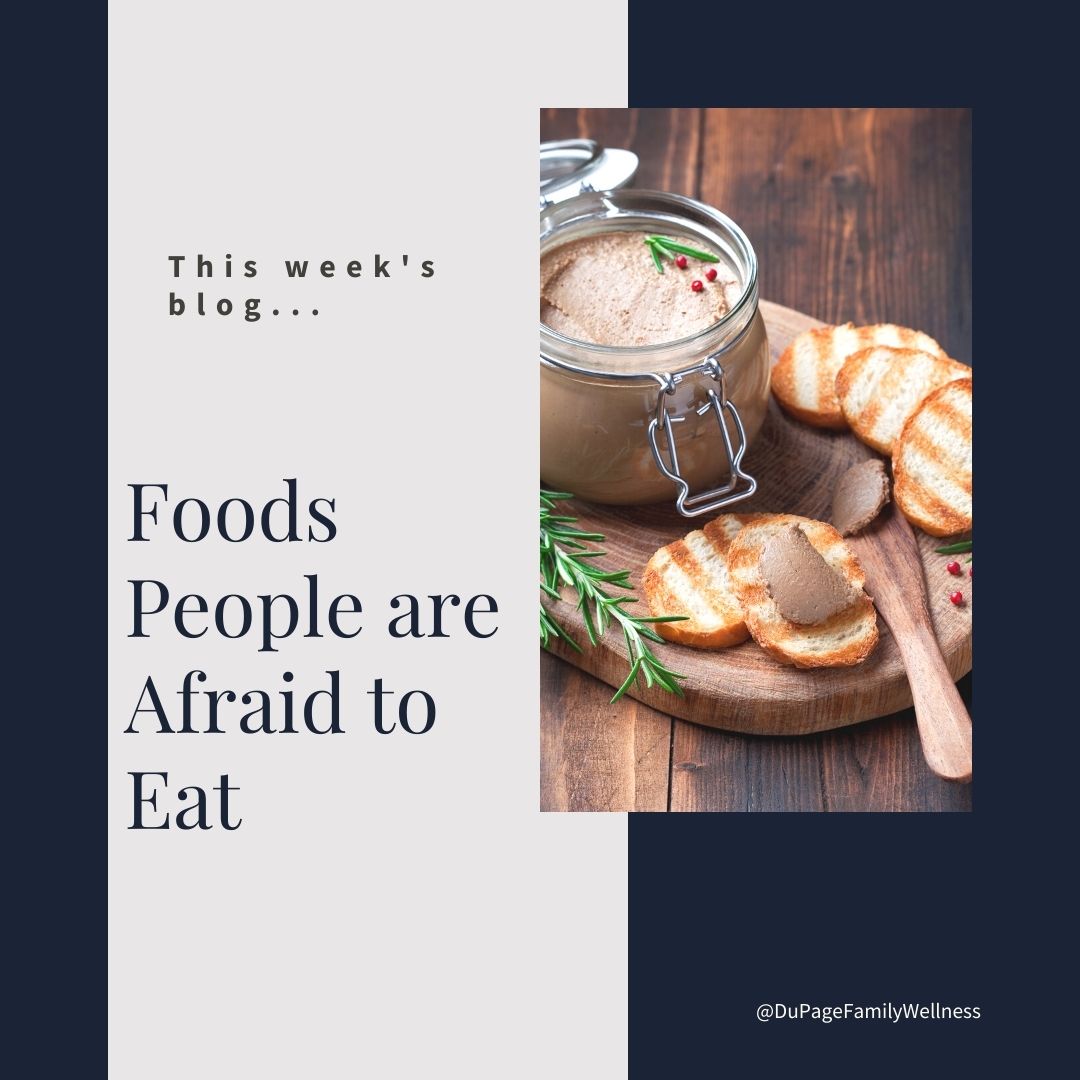 It’s not only kids that avoid certain foods. Many adults who don’t consider themselves picky eaters avoid certain foods as well.
It’s not only kids that avoid certain foods. Many adults who don’t consider themselves picky eaters avoid certain foods as well.
Some people are afraid to eat specific foods because they have been told they are unhealthy, while others think they will taste bad.
Let’s look at 5 foods that many people avoid and tear down the myths that surround them. You might be surprised that the following foods have many health benefits and actually taste good!
Red Meat
Many people think that red meat is unhealthy, raising your cholesterol and setting you up for heart disease. However current research shows this is not true.
According to Dr. Chris Kresser, “despite what you’ve heard, red meat is an extremely healthy and nutrient-dense addition to your plate. It’s a great source of vitamin B12, Vitamin d, Iron, Zinc, Magnesium, Copper, Cobalt, and more.”
For more information about the benefits of red meat check out his article Red Meat: The Food They Love to Hate or download his eBook The Truth About Red Meat.
Eggs
Eggs have gotten a bad reputation over the years. It makes me sad that so many people are afraid of cholesterol, because cholesterol in our diet is not the enemy!
Studies have shown that eating eggs does not affect blood cholesterol in 75% of the population and only modestly increases LDL and HDL cholesterol in the rest of the population. These studies have found that eating eggs does not increase the risk of heart disease.
To learn more about why your body actually needs cholesterol check out my blog post Bacon & Eggs: Healthy or Not.
Read more ...
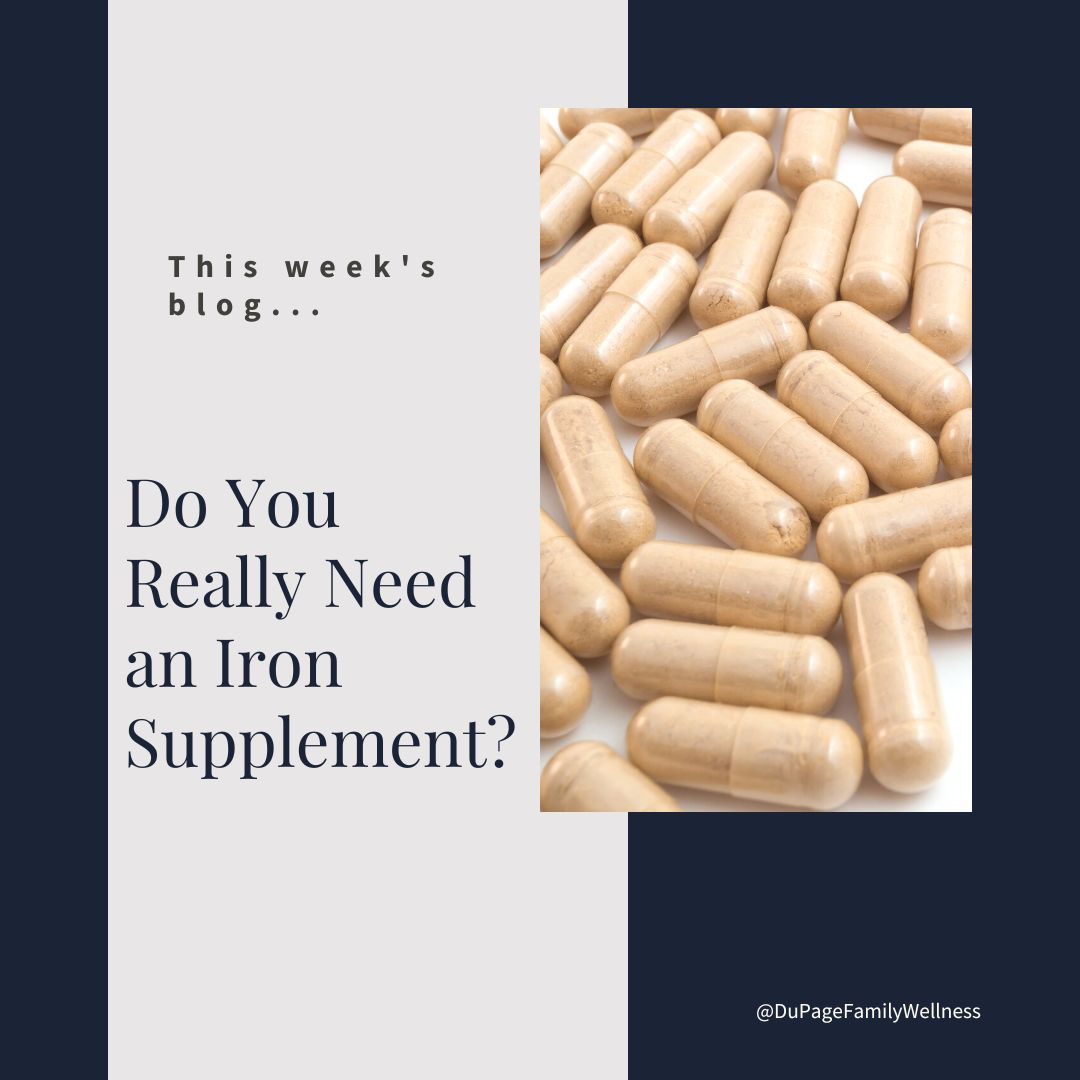
Do you feel tired all the time? If so, you may wonder if you are iron deficient. You may try to take iron supplements or go to the doctor for testing.
If you go to the doctor, they will probably use a blood test to check the ferritin levels in your body. Ferritin, a protein in iron, is often thought to be the best way to check for low iron or anemia.
But what if the iron is already in your cells, not in your blood? Are you really lacking iron in your body, or is the iron simply not working properly?
Let’s look at the purpose of iron and how it works in the body, so we can use this knowledge to make wise decisions about our iron consumption.
Iron’s Purpose & Movement in the Body
We cannot survive without oxygen circulating through our bodies. Iron's one responsibility is to carry oxygen in the body. Think of it as a waiter with a silver tray gracefully carrying the oxygen where it needs to go throughout the body.
The oxygen is carried on the iron through the body on red blood cells. You can think of the red blood cells as a moving sidewalk as you see in airports.
Once a red blood cell is not working anymore, the iron is able to keep circulating through the body by jumping on another red blood cell.
So, the waiters (iron) are riding on moving sidewalks (red blood cells) while carrying a tray (with oxygen on it). When one moving sidewalk (red blood cell) stops working, the waiter (iron) steps onto another moving sidewalk (red blood cell).
For this reason, we can say that the body has its own recycling system in regard to iron! The iron doesn’t stop working when the red blood cell does. It is just carried through the body on another red blood cell.
Read more ...
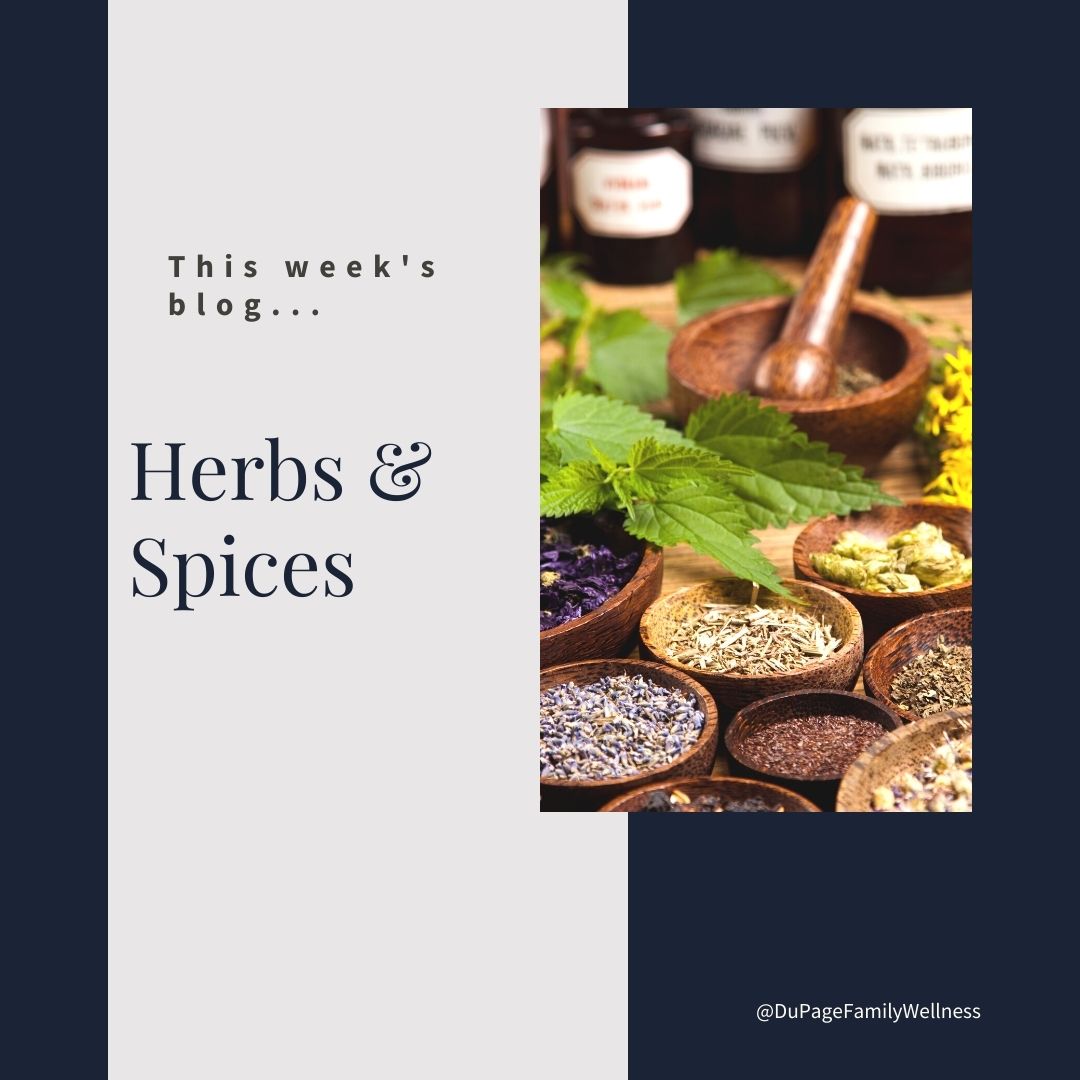 Are you someone who loves natural healing over pharmaceuticals? There are so many options when it comes to natural health. One effective method of healing is through spices and herbs. They have been believed to preserve health for thousands of years!
Are you someone who loves natural healing over pharmaceuticals? There are so many options when it comes to natural health. One effective method of healing is through spices and herbs. They have been believed to preserve health for thousands of years!
Egypt started having schools for herbalists in 300 B.C. According to The Book of Spices, around 2600 to 2100 BC “onions and garlic were fed to the one hundred thousand laborers who toiled in the construction of the Great Pyramid of Cheops, as medicinal herbs to preserve their health.”
Recent studies have supported what the Egyptians long knew. There are many health benefits of herbs and spices. But with so many options it’s hard to know which ones will work for you.
Let's explore herbs and spices to see which ones could help you on your journey to health!
Healing Properties of Specific Spices
There are a variety of herbs and spices, each with their own special healing properties. If you know which ones apply to your particular situations, they can be very effective.
- Cinnamon is a delicious spice that has many health benefits. In a study comparing 26 spices, it was found to have the highest level of antioxidants. It has many anti-inflammatory properties and is known to help with blood sugar regulation. It may help individuals with Alzheimer's, Parkinson's, HIV, and cancer.
- Sage is another spice with anti-inflammatory properties. It’s been shown to decrease cholesterol and blood sugar in diabetic patients. It may improve memory in both Alzheimer's patients and younger individuals. It was found to decrease the frequency and intensity of hot flashes in menopausal women.
- Peppermint is often effective in reducing pain from headaches, nausea, colic, allergies, as well as muscle and joint pain. It’s been found to have antimicrobial, antiviral, and antioxidant properties. A study published in the Avicenna Journal of Phytomedicine found that it even increased sports performance. It has also been found to decrease IBS.
- Turmeric/Curcumin is well known for its anti-inflammatory properties. It is also effective in reducing symptoms of depression, helping the body in detoxification, combating obesity, and alleviating symptoms of Inflammatory Bowel Disease. It may help treat or prevent some cancers, slow or prevent blood clots, as well as assist in regulating blood sugar. The benefits of this spice are almost too many to list. It may be beneficial to combine this spice with black pepper to help the body absorb it.
Read more ...
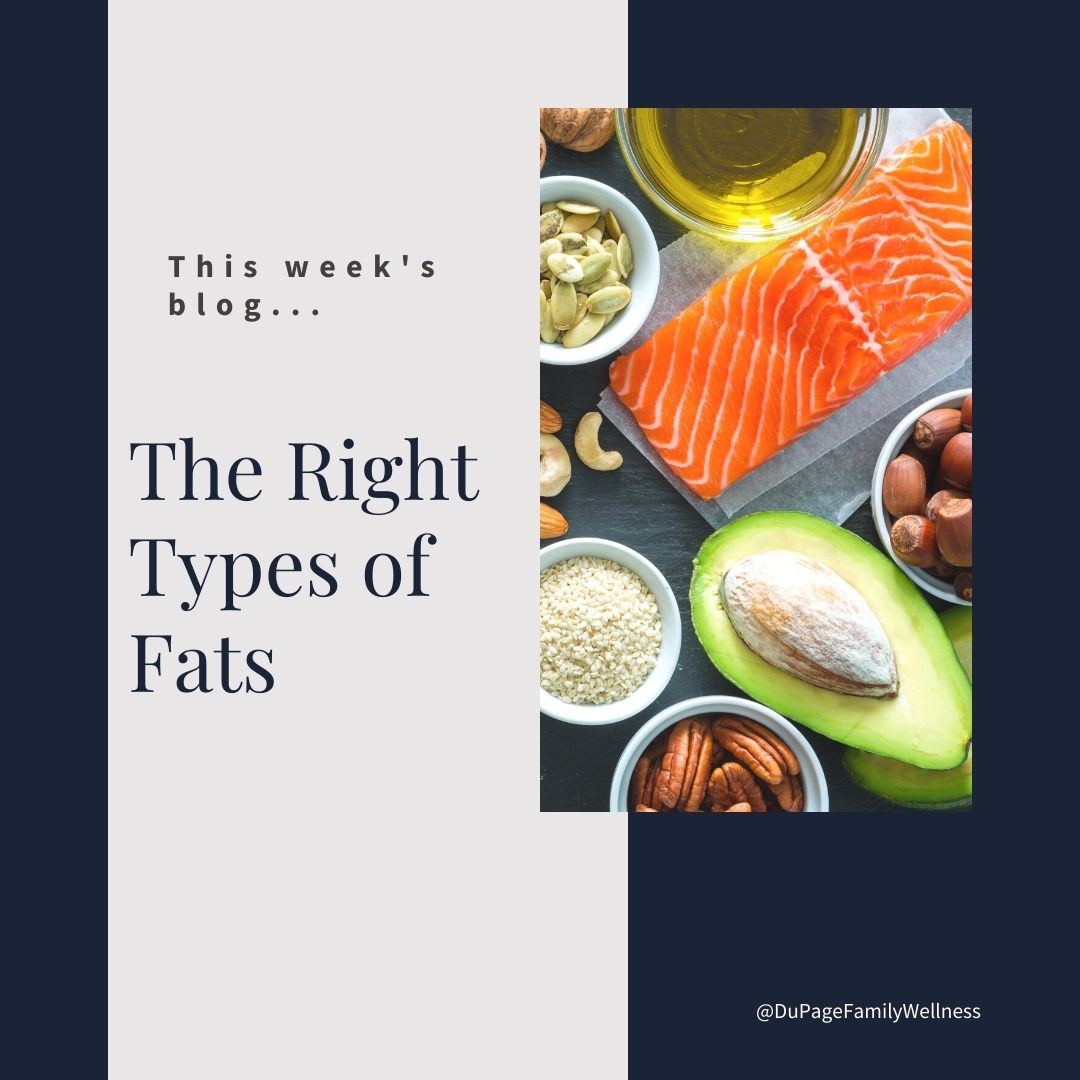 Are you afraid to incorporate fats into your diet? Do you believe that eating fat will make you fat? If so, you may eat a lot of chicken breast, steamed veggies, low-fat milk, low-fat yogurt, and salads with fat-free dressing.
Are you afraid to incorporate fats into your diet? Do you believe that eating fat will make you fat? If so, you may eat a lot of chicken breast, steamed veggies, low-fat milk, low-fat yogurt, and salads with fat-free dressing.
You may believe this due to the messages in the media. You’ve likely been taught that eating fat is bad for you, but this is simply not true! Regardless of what the media says, the research is clear.
Eating the right fats will make a HUGE impact on your body, but eating the RIGHT fats is the key!
Let’s explore what fats to eat and which to avoid.
We need HEALTHY fat
There are several essential fatty acids that your body cannot make on its own. If you don’t consume fat it may lead to inflammation, fatigue, poor memory function, heart issues, depression, dry skin, and other unpleasant symptoms.
Every cell in your body contains fat. One reason your body needs fat is to produce hormones. This is especially important for fertility, pregnant and postpartum patients, as well as those with Polycystic Ovary Syndrome (PCOS)!
Healthy fats help us feel full, maintain energy, stabilize blood sugar, and help with insulin resistance. Eating healthy fat (like olive oil) with your salad or veggies will also allow your body to absorb more of the nutrients from the vegetables.
Types of Fats
There is a BIG difference between good, natural, unprocessed, unrefined sources of fat and highly processed, refined fats.
Healthy fats should be incorporated into your diet every day. In some cases, it can be beneficial for these fats to make up well over HALF of the calories that a person consumes.
The processed and refined fats on the other hand, are considered “junk calories”. These unhealthy fats can be oxidized or rancid and are unrecognizable to our bodies. They actually contribute to inflammation which we know leads to all sorts of health problems.
Healthy Fats
These foods contain GOOD Fats. Enjoy eating these frequently without guilt!
- Avocados
- Olives
- Ghee
- Butter (I especially love Kerrygold)
- Plain yogurt (Full fat)
- Avocado oil
- Coconut oil
- Olive oil
- Nuts
- Fish (salmon, herring, anchovies, and sardines)
- Grass fed beef
- Dark meat from free range poultry
- Fats from animals (lard, beef tallow, duck fat, etc.)
- Eggs (especially from pastured chickens)
*It is important that the meat you eat comes from animals that were healthy and got to eat their natural diets while they were alive.
Unhealthy Fats
Unhealthy fats often hide in processed foods such as chips, crackers, and baked goods. Some of these fats are too high in omega 6 fatty acids, and they are all highly processed. An especially unhealthy type of fat is trans fat which we will talk about later.
Some examples of unhealthy fats include:
- Safflower oil
- Sunflower oil
- Soybean oil
- Canola oil
- Corn oil
- Vegetable oil
- Margarine
- Crisco
- Peanut oil
- Wheatgerm oil
- Cottonseed oil
- Grapeseed oil
- Rice Bran oil
- Anything hydrogenated or partially hydrogenated
As mentioned above, the worst type of fat is probably trans fats. These are man-made fats that are no longer classified at GRAS (Generally Recognized as Safe) by the FDA. When people eat trans fatty acids, various amounts of it are deposited in the body's tissues and impact the way the body functions.
For this reason, trans fats should be completely eliminated from the diet. They are commonly found in fried foods, doughnuts, baked goods, pie crusts, biscuits, frozen pizza, cookies, crackers, margarine, and other “butter-like” spreads.
Tips to Handle Fats
If you are someone who feels guilty about eating fats, consider adding some healthy fats to your diet. Enjoy butter, avocado, olive oil, and more fats from the “healthy” list above!
If you still have some of the “unhealthy” fats listed, you may want to consider switching these out with some of the healthier fats. Little changes, done consistently, can set you on a path to better health! To do this is is great to:
- Eat mostly whole and unprocessed foods (plants, animals, etc.).
- Limit meals at restaurants, as they typically use unhealthy oils. (If you do have to eat out often, choose a salad with olive oil and vinegar dressing.)
- Read labels carefully (many healthy looking oils are mixed with “blends” of other oils).
- Make your own salad dressing. It’s easy to do! (If you need some ideas, just ask. I’ll send you some recipes that I love.)
- Buy oils in a dark glass bottle to keep them from oxidizing. (When oil is stored in clear plastic bottles it will easily oxidize and become rancid.)
Still not convinced? Check out this article which explains why healthy fats do NOT cause high cholesterol, high blood pressure, or other related health conditions.
Let me know if you have questions. If you are interested in learning more about nutrition, I’d be happy to send you information about “Seven Weeks of Real Food.”
Dr. Jamie
Mark Hyman, MD. Eat Fat, Get Thin. Little, Brown and Company, 2016.
Mary Enig, PhD. Know Your Fats. Bethesda Press, 2013.
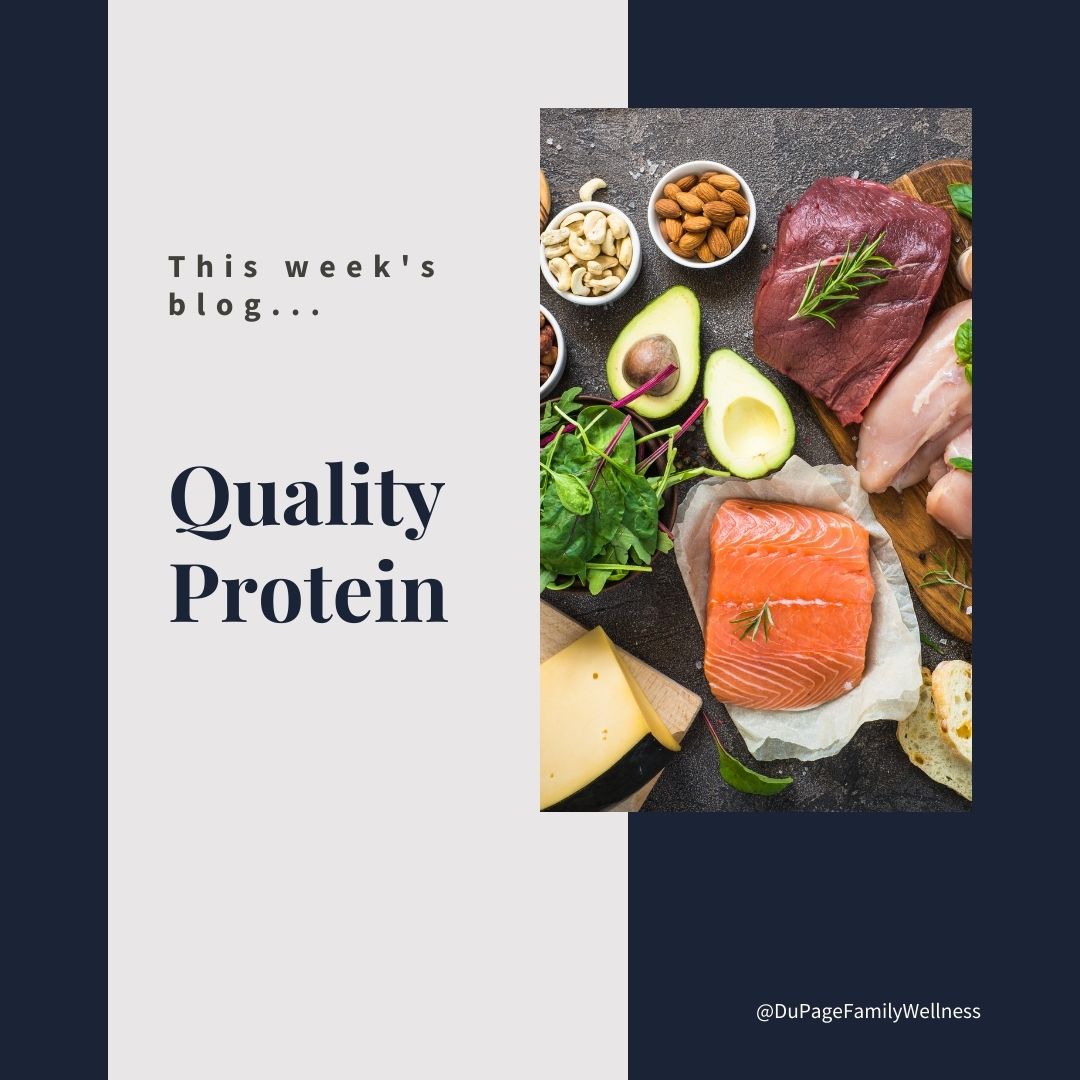 Did you know that every cell in your body contains protein? And that protein contains amino acids that are used to repair all the tissues in your body?
Did you know that every cell in your body contains protein? And that protein contains amino acids that are used to repair all the tissues in your body?
It’s true, your body needs protein to replenish itself. According to livestrong.com, protein helps “build muscles, produce new cells, regulate hormones and enzymes, heal wounds and promote immune function”.
It is considered the most important macronutrient in building muscle, which can elevate your metabolic rate. And since protein also helps you feel full longer, it is great for those wanting to lose weight.
Since the body does not store protein, it depends on your diet to provide adequate amounts. Let’s look at the healthiest ways to get this protein.
Animal Protein
Meat can be a wonderful source of protein, but it is important to make sure you are getting quality meat! How the animal was raised, and what the animal did while it was alive, is extremely important. It is not just in the animals' best interest to be grass-fed or free-range, it has a direct impact on your health as well.
A study done by Mother Earth News compared eggs from free-range chickens with those produced commercially. It found that free range eggs had:
- 2/3x more Vitamin A
- 2x more Omega-3
- 3x more Vitamin E
- 7x more Beta Carotene
In addition, grass fed beef also has been found to contain higher levels of vitamins, antioxidants, and anti-inflammatory Omega 3 fatty acids when compared to conventional beef.
What about Plant Proteins?
While plants contain many necessary nutrients, they are not considered a complete protein because they lack one or more of the essential amino acids. It is possible to get the nutrients you need without eating meat, but it takes care to make sure you are getting everything you need. Plants contain compounds like oxalates and phytates which hamper your body's ability to absorb key minerals like zinc, magnesium, calcium, copper, and iron. Additionally, the vitamins in plants are often times found in less active and less bioavailable forms.
For anyone who is thinking that plant proteins are superior or equal to those from animals, consider the following example. In order to get the same amount of protein in 4 oz. of steak (181 calories) from rice and beans, you would have to eat 12 ounces of kidney beans plus a cup of rice! That would give you 638 calories, and for the carb counters out there, this would be 122 grams of carbs!
For those of you that are trying to eat a vegetarian or vegan diet, the following are some of the protein sources. Like I mentioned above, this can be done, but it does take special consideration to be sure that you are getting all of your nutrients.
- Whole, organic, non-GMO soy products such as tofu. (Please do NOT rely on products containing soy protein isolates or concentrates which are often found in soy burgers, meatless chicken, as well as protein bars.)
- Nuts & seeds
- Beans & lentils (if your body tolerates them well.)
- Quinoa, rice, and other grains
- Some plant-based protein shakes may be useful if you are struggling to get enough protein in your diet, but check the ingredient list carefully!
This Vegetarian and Vegan Guide was created by Mark Hyman, M.D. It is a great resource for vegan and vegetarians trying to eat healthy.
How to Buy Quality Protein
Companies spend a lot of money each year marketing their products. The terms used can be confusing for consumers. The following chart can help you decipher these terms, so you know what to look for when you shop.

*For more about these terms check out our Protein Guide.
Amount of Protein
Ideally people would consume one serving of protein with each meal (one serving of protein is roughly the size of the palm of your hand or a deck of cards). However, each person’s body and activity level are different, so protein needs will vary. If you are reading labels, I like to aim for at least 25-30 grams/meal.
Listen to your body! It is the best indicator of how much protein is right for you. If you don’t eat much protein, consider adding some to see how it makes you feel. If you do eat a lot of protein, does it set well with you?
The Importance of Nose to Tail Eating
As you all know by now, I like to relate everything to how our ancestors used to live. Instead of just eating chicken thighs, steak and ground meats, which are all muscle meat, our ancestors used THE WHOLE ANIMAL! There are incredible nutrient and health benefits in utilizing this practice.
Organ meat like liver is one of the most nutrient dense foods that there is! In fact, my sister gives liver credit for helping her body to heal when she was struggling with infertility. (Here is her story) We try to buy our animals by the quarter/half animal and eat organ meat too. One of my kids' favorite meals is "Beef Heart Stew"
Bone broth made from the bones of animals is great for soups, stews, or just drinking. Broth and the gelatin that is freed during the cooking process is so good for our hair, skin and nails. It has a different amino acid profile than muscle meats, and can help to balance our protein intake in an incredibly beneficial way. I love the following article on how to use gelatin and why it's so good for you!
Polycystic Ovary Syndrome (PCOS), Insulin Resistance, and Protein
About 85% of women with Polycystic Ovary Syndrome (PCOS) have issues with insulin resistance (As well as a huge percentage of our whole population). If you are one of these women, it is crucial to address your symptoms and get to the root cause.
If insulin resistance is one of your root causes, eating enough protein (and fat) throughout the day will allow your blood sugar to remain steady and keep you from the blood sugar spikes you would otherwise get.
Protein is good for us all, but if you have PCOS or insulin resistance, it can really be a game changer!
If you need more guidance on giving your body the nutrition it needs, feel free to reach out to me. We can discuss whether a program like “Seven Weeks of Real Foods” or “BALANCED” would be right for you. (To learn more about BALANCED you can watch by FREE webinar.)
Dr. Jamie
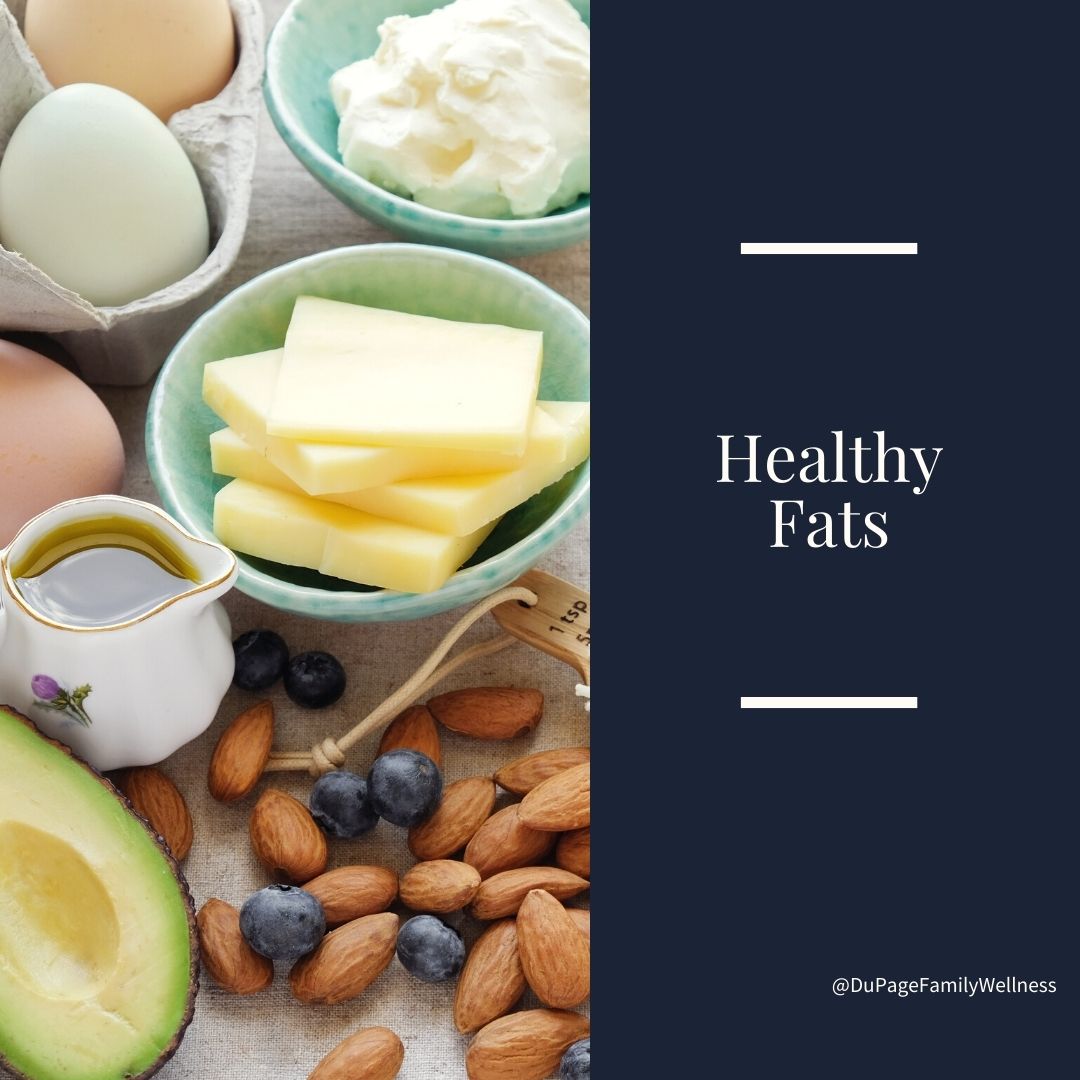 Are you afraid to incorporate fats into your diet? Do you believe that eating fat will make you fat? If so, it's not your fault. You’ve likely been taught for years by the media that eating fat is going to make you fat, BUT this is simply not true!
Are you afraid to incorporate fats into your diet? Do you believe that eating fat will make you fat? If so, it's not your fault. You’ve likely been taught for years by the media that eating fat is going to make you fat, BUT this is simply not true!
The topic of fat can get very confusing, very quickly. But eating the right fats will make a HUGE impact on decreasing inflammation within your body. While eating fats is incredibly important, eating the RIGHT fats is the key!
We need HEALTHY fat
EVERY cell in our body contains fat. Healthy fats help us feel full, stabilize blood sugar, and maintain energy.
There are several essential fatty acids that our bodies cannot make, and if we don’t consume them it may show up as inflammation, fatigue, poor memory function, heart issues, depression, dry skin, as well as other unpleasant symptoms.
Our bodies also NEED fat to produce HORMONES. This is especially important for my fertility, pregnant, and postpartum patients!
In addition, eating healthy fat (like olive oil) with your salad or veggies will actually allow your body to absorb more of the nutrients from the vegetables.
Read more ...
 It’s not only kids that avoid certain foods. Many adults who don’t consider themselves picky eaters avoid certain foods as well.
It’s not only kids that avoid certain foods. Many adults who don’t consider themselves picky eaters avoid certain foods as well.


 Are you someone who loves natural healing over pharmaceuticals? There are so many options when it comes to natural health. One effective method of healing is through spices and herbs. They have been believed to preserve health for thousands of years!
Are you someone who loves natural healing over pharmaceuticals? There are so many options when it comes to natural health. One effective method of healing is through spices and herbs. They have been believed to preserve health for thousands of years!  Are you afraid to incorporate fats into your diet? Do you believe that eating fat will make you fat? If so, you may eat a lot of chicken breast, steamed veggies, low-fat milk, low-fat yogurt, and salads with fat-free dressing.
Are you afraid to incorporate fats into your diet? Do you believe that eating fat will make you fat? If so, you may eat a lot of chicken breast, steamed veggies, low-fat milk, low-fat yogurt, and salads with fat-free dressing.  Did you know that every cell in your body contains protein? And that protein contains amino acids that are used to repair all the tissues in your body?
Did you know that every cell in your body contains protein? And that protein contains amino acids that are used to repair all the tissues in your body?  Are you afraid to incorporate fats into your diet? Do you believe that eating fat will make you fat? If so, it's not your fault. You’ve likely been taught for years by the media that eating fat is going to make you fat, BUT this is simply not true!
Are you afraid to incorporate fats into your diet? Do you believe that eating fat will make you fat? If so, it's not your fault. You’ve likely been taught for years by the media that eating fat is going to make you fat, BUT this is simply not true!